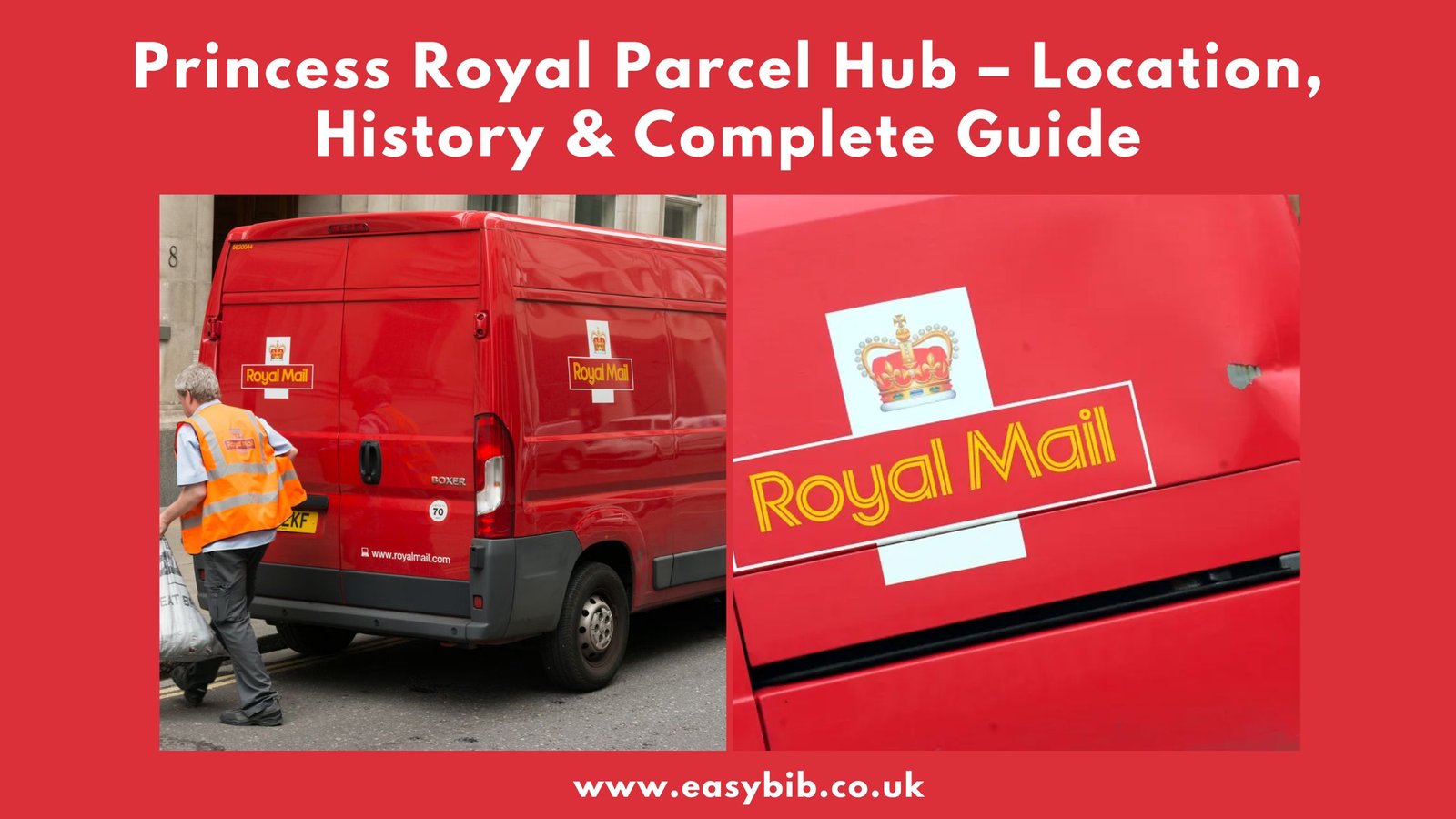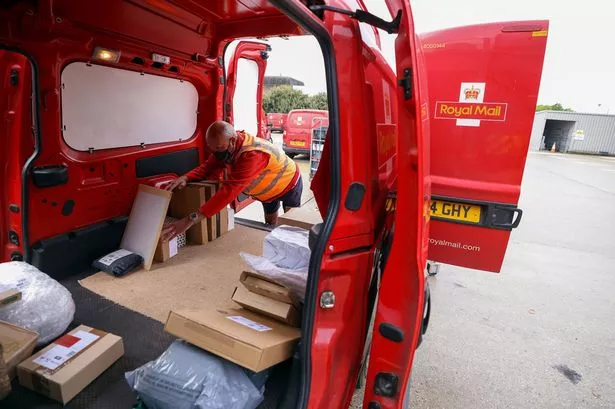Princess Royal Parcel Hub – Location, History & Complete Guide

The Princess Royal Parcel Hub, officially known as the Princess Royal Distribution Centre, is one of the largest and most significant parcel-handling facilities in the United Kingdom. Operated by Royal Mail, this hub is a key part of the nationwide logistics network that keeps millions of parcels moving every week.
Its role is to serve as a central sorting and distribution point, connecting different parts of the UK quickly and efficiently. It handles huge volumes of mail, especially during peak periods like Christmas, Black Friday, and other shopping seasons.
While the Princess Royal Parcel Hub has a strong modern presence, it also has an interesting history. It was once part of an ambitious project to modernise Royal Mail’s operations through high-speed rail links. Today, it operates mainly through road-based transport, but its strategic location and infrastructure remain crucial to the postal service’s efficiency.
Where Is the Princess Royal Parcel Hub?
The Princess Royal Parcel Hub location is in Stonebridge Park, North-West London. The exact address is Blackmore Road, NW10, in the London Borough of Brent. It sits next to the West Coast Main Line, around 6.5 miles from London Euston Station.
This position is not random. It was chosen because of its excellent transport connections. The site has easy access to major roads such as the North Circular Road (A406) and the A40 Western Avenue. These roads connect to the motorway network, allowing large trucks to travel quickly across the country.
Being in London also means the hub can handle huge volumes of parcels coming in and out of the capital. This is critical because London is one of the busiest delivery regions in the UK.
History of the Facility
Planning and Construction
The Princess Royal Parcel Hub was built during the early 1990s. At the time, Royal Mail launched the Railnet project, which aimed to modernise mail distribution by creating a network of new, purpose-built hubs linked directly to the railway system.
The idea was that large quantities of mail could be transported overnight by high-speed trains, reducing road congestion and improving efficiency. The Princess Royal Distribution Centre was designed as one of the main hubs in this new system.
The construction included state-of-the-art sorting equipment, large rail platforms, and extensive road vehicle bays. This combination meant parcels could arrive by train, be sorted, and then sent out again by road or rail in very little time.
Opening and Naming
The facility officially opened in the mid-1990s. On 20 May 1997, it was formally inaugurated by Princess Anne, the Princess Royal, who gave her name to the site. This royal naming was a significant event, reflecting the hub’s importance to the national postal network.
When it opened, it was considered one of the most advanced postal facilities in the country. It could handle massive volumes of mail with speed and accuracy, thanks to its automation and its dual road and rail infrastructure.
READ MORE
Structure and Facilities
The Princess Royal Parcel Hub covers around 10,000 square metres in total, with 3,400 square metres dedicated to offices and welfare areas for staff.
Its main sorting hall was fully automated from the start, using conveyor belts, scanners, and sorting systems to handle parcels of different sizes and destinations. This automation helped Royal Mail to process large volumes of mail without excessive manual handling.
Originally, the hub featured seven rail platforms, each about 263 metres long, allowing full-length mail trains to be loaded and unloaded directly into the sorting area. It also had forty vehicle loading bays for heavy goods vehicles (HGVs) and vans.
This setup allowed a smooth transition between rail and road. Parcels could arrive in bulk on trains, be sorted quickly, and then be loaded onto road vehicles for delivery to regional centres. The combination was intended to offer speed, efficiency, and flexibility.
Operations and Role in the Network
The Princess Royal Parcel Hub acts as a central node in Royal Mail’s nationwide network. Parcels from different parts of the UK are brought here for sorting, re-routing, and onward delivery.
In the 1990s and early 2000s, the hub handled a large amount of mail arriving by train. However, by 2004, Royal Mail ended its dedicated rail services here. The decision was influenced by cost, operational flexibility, and changes in demand.
Since then, the hub has been almost entirely road-based. Parcels now arrive and depart by truck, with vehicles connecting it to other major Royal Mail centres across the UK. The site operates both day and night, ensuring parcels keep moving 24/7.
During peak times, such as Christmas, the workload at the Princess Royal Parcel Hub can double or even triple. Royal Mail often hires additional temporary staff to cope with this surge.
Importance of the Location
The location of the Princess Royal Parcel Hub in North-West London makes it an ideal connection point between southern and northern England. It also provides easy access to major routes leading to Wales and Scotland.
Because it is so close to the capital, it is also essential for moving parcels in and out of London. This helps Royal Mail keep up with the high demand in one of the busiest delivery regions in the country.
Being close to both major motorways and rail lines means that the hub can quickly dispatch parcels across the UK. Even though rail is no longer used for regular operations, the location still benefits from the infrastructure around it.
Staffing and Workforce
The Princess Royal Parcel Hub employs a significant number of staff. These include permanent Royal Mail employees and seasonal workers brought in during peak demand.

Staff roles include sorting operatives, forklift drivers, engineers, office administrators, and managers. There are also logistics coordinators who ensure that vehicles are loaded and dispatched on time.
The work can be fast-paced, especially during high-demand periods. Staff often work in shifts to keep operations running around the clock. Royal Mail also invests in training to ensure that safety and efficiency standards are maintained.
READ MORE
Customer Experiences and Tracking
For many customers, the first time they hear of the Princess Royal Parcel Hub is when it appears on their parcel tracking updates. A tracking entry might say something like “Item has arrived at Princess Royal Parcel Hub” or “Item has been processed at Princess Royal Distribution Centre.”
This means the parcel is being sorted for onward travel. In many cases, parcels move through the hub within a day. However, delays can happen.
Online forums such as Reddit and Trustpilot show mixed experiences. Some customers report parcels moving through the hub within hours. Others say their items have been stuck there for days or even weeks, often due to seasonal backlogs, strikes, or customs issues.
The variability in timing is because parcels from the hub can be sent in many different directions. Some go directly to local delivery offices, while others travel to regional hubs first.
Common Reasons for Delays
- Seasonal surges – Christmas and shopping events like Black Friday can slow processing.
- Industrial action – Strikes at Royal Mail can halt operations temporarily.
- System maintenance – Software upgrades or mechanical repairs may cause brief delays.
- Customs checks – For international items, additional clearance may be required.
While delays are frustrating, most parcels do eventually continue their journey without needing customer intervention.
Conclusion
The Princess Royal Parcel Hub is one of the most important links in Royal Mail’s nationwide delivery chain. Its strategic location in North-West London, combined with its large capacity and advanced sorting systems, allows it to process and dispatch vast numbers of parcels every day.
While its history as a rail-linked hub is now largely in the past, its importance in road-based logistics continues to grow. For customers, seeing their parcel pass through this hub is a sign that it is on its way to its final destination.
The hub’s future will likely involve greater automation, more sustainable transport, and continued adaptation to the changing demands of online shopping and global commerce.
